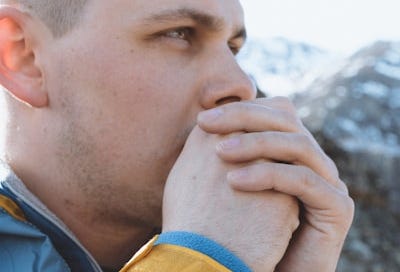Cold Comfort
Exercising once you're very cold won't help your endurance, the benefits of evening workouts for those living with obesity and your weekly recommendations.
The Rundown
Cold Comfort. While exercise science research has suggested that cold is bad for endurance, a recent study makes a distinction between exercising in the cold and being cold before you begin.
A team from Brock University in Canada compared cycling performances in four different conditions. The control group sat in a chamber that was set at 72 degrees Fahrenheit for 30 minutes and then they began cycling with a five minute warm-up at 100 watts before pedaling to exhaustion at 70 percent of VO2 max. Another group sat in 32 degrees for 30 minutes, which dropped skin temperature but not core temperature before they started the cycling test.
For the remaining two conditions, the participants (10 men around age 27) sat in the 32 degree chamber until their core temperatures dropped by 0.9 or 1.8 degrees (mild hypothermia) before cycling.
While previous research with similar cycling tests found that performance in 37 to 39 degrees was unaffected or even improved compared to moderate temperatures, the Brock team’s results with pre-cooling were very different.
In the cold condition, time to exhaustion on the bike dropped from 23.8 to 16.2 minutes. It dropped to 8.5 minutes in the first hypothermia condition and 6.5 minutes in the second.
The results show that skin cooling by itself was enough to reduce endurance by around 30 percent and core cooling took away an additional 30 to 40 percent. Cycling to exhaustion wasn’t enough to warm up the participants if they stayed long enough in temperatures hovering around freezing.
Time to Move. A team from the University of Sydney says doing the majority of daily physical activity in the evening is linked to the greatest health benefits for people living with obesity.
The study used UK Biobank data to follow more than 29,000 people over the age of 40 living with obesity. Close to 3,000 of them were also diagnosed with Type 2 diabetes.
The participants were grouped into morning, afternoon or evening exercisers and undertook moderate to vigorous activity. Their movement, which included anything from power walking to climbing stairs to running to vigorously cleaning the house, was measured by a wrist accelerometer worn for 24 hours a day over seven days at the outset of the study.
The researchers linked health data to follow the participants for 7.9 years and accounted for differences in age, sex, smoking, alcohol intake, fruit and vegetable consumption, sedentary time, total physical activity, education, use of medication and sleep duration.
The study is observational but it does support the researchers’ hypothesis, based on previous work, that people living with diabetes or obesity are already glucose intolerant in the late evening and so may be able to offset some of that intolerance by exercising at that time.
Extra Point
Watch
The Playbook. This Netflix documentary series features coaches with championship resumes, including Dawn Staley, Jose Mourinho, and Jill Ellis, sharing their rules for success in sports and life. The Playbook is streaming now.
Listen
The Dream Conductor. A podcast designed to “guide listeners towards tranquility,” episodes offer curated sleep stories and soothing music to combat insomnia and welcome a restful sleep.
Read
Breathwork. In this book, yoga teacher Valerie Moselle offers a practical guide for incorporating breathing exercises into your day. She explains the basics and then offers a three-week program with simple, step-by-step exercises you can try.



